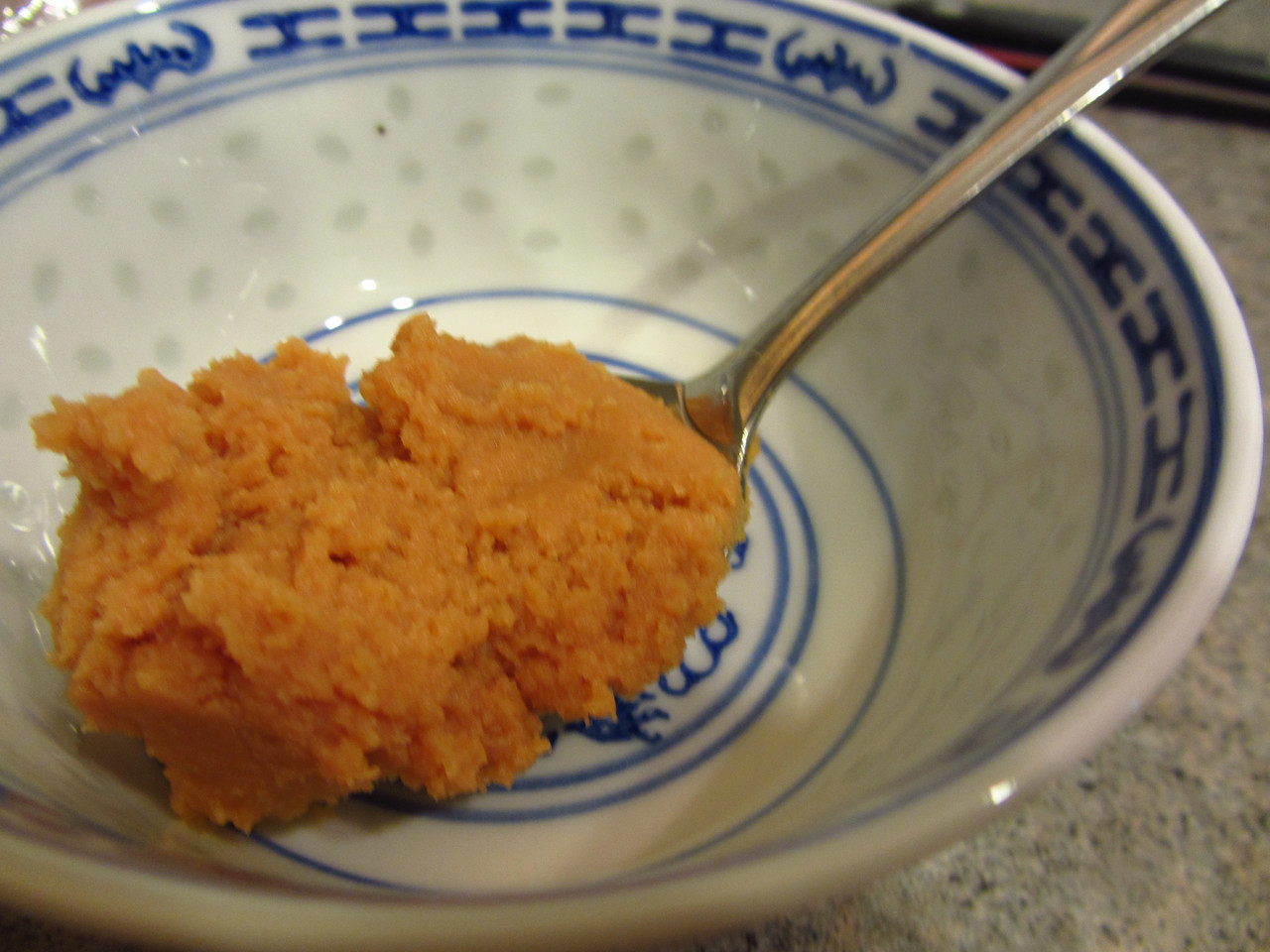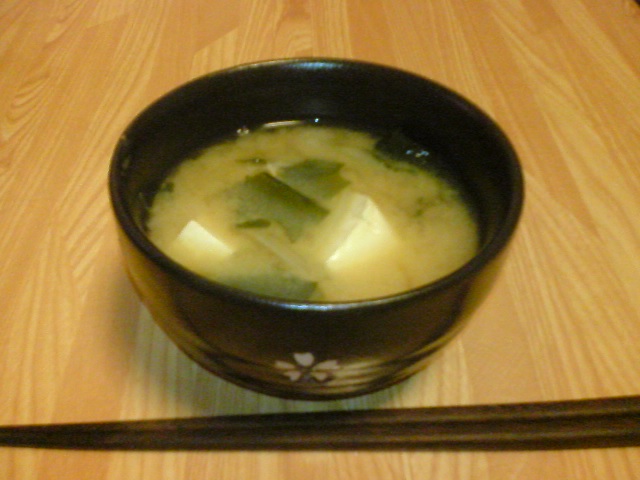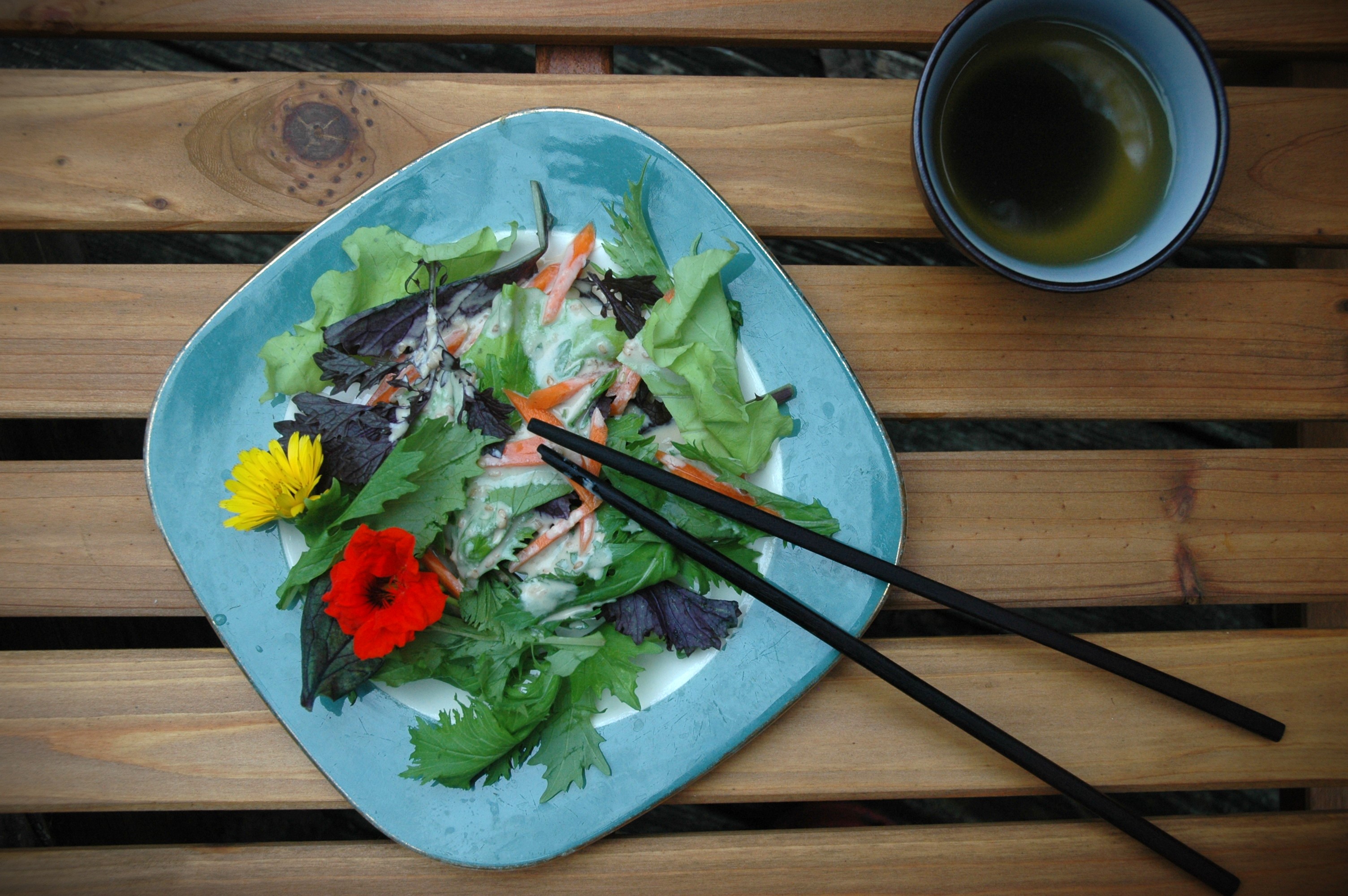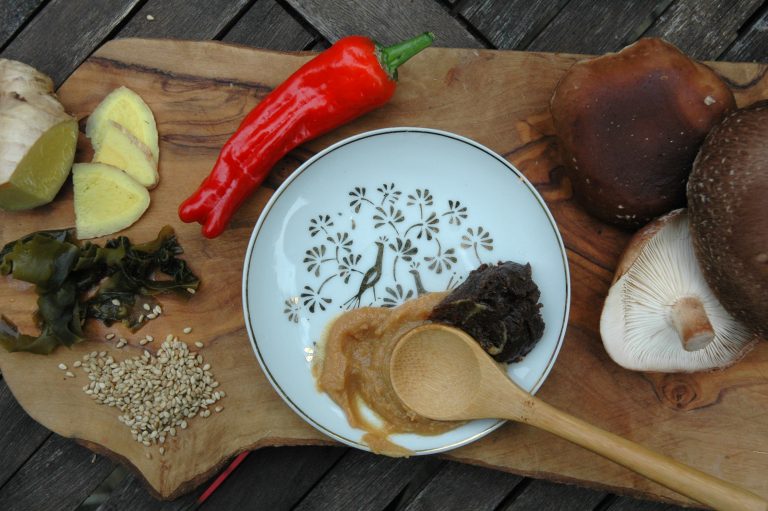With all the advantages of a fermented food and the fifth fabulous flavor (umami) to boot, one might call miso an underutilized superfood. Short of a brothy bowl accompanying sushi at a Japanese restaurant, most of us rarely encounter miso on a daily basis. Yet this probiotic paste is not only easy to find, it’s also easy to use; and the benefits go beyond deliciousness.
Miso healthy
Fermentation is a natural, metabolic process whereby microorganisms like fungi and bacteria use enzymes to break down starches and proteins into sugars and acids. In the case of miso, Aspergillus oryzae uses enzymes to break down the proteins in soybean, creating amino acids and thereby making miso a complete protein.
The process also prompts the growth of probiotics — friendly bacteria that help maintain a healthy digestive system, boost immunity, and provide many other potential benefits. The microfungus that transforms soybeans into miso produces valuable bioactive secondary metabolites, and also boosts the protein content of its soybean substrate as it ferments.
The result is a probiotic paste rich in living enzymes, easily-digestible protein, vitamins, minerals and phytonutrients – including important antioxidants. Like many fermented foods, miso is alkaline forming, and can help maintain a pH balance necessary for resisting disease. In addition, miso contains the alkaloid dipicolinic acid, which collects and removes heavy metals and other toxins from the body.
Traditional Chinese medicine (TCM) also recognizes miso for its ability to eliminate toxins. With its mildly-sweet, salty flavor, miso is considered a moderately yang food. It is warm in nature and tonifies the blood, spleen and kidney.
A brief history of miso
Success
You are now signed up for our newsletter
Success
Check your email to complete sign up
While miso is almost exclusively associated with Japanese cuisine, its origins may actually date back to Ancient China. As early as the 11th century BC, Jiàng (醬 ) and chǐ (豉) were Chinese fermented products made from flesh foods and beans, respectively. Fermented soybeans are believed to have been exported to Japan by Buddhist monks during the 6th or 7th Century.
As with many advancements in civilization, however, similar discoveries could have taken simultaneously in different lands. Fish and grain fermentation were already underway in Japan during the Neolithic period, so it is also possible that bean fermentation began independently in the small Island nation.
Either way, the enhancement and evolution of miso took place in Japan, where the condiment became almost a cornerstone of the country’s cuisine. Early miso consumption was a privilege for the elite, who used the paste as a delicacy. Later, small amounts were used to flavor to broth, and it gained widespread popularity as farmers began fermenting their own soybeans.
What we recognize as miso today, however, only appeared in the Muromachi period (1337 to 1573), when the Japanese began grinding soybeans into a meal before fermenting. This yielded a smooth condiment that was easily incorporated into liquids and a wide range of recipes.

Making miso
Traditional miso is made with three basic ingredients: soybeans, salt, and koji (Aspergillus oryzae) — a microscopic fungus typically grown on rice or barley, which assists in the fermentation of products like amazake, soy sauce, pickled daikon, and, of course, miso.
To make koji, cooked, polished grains are inoculated with spores, and incubated at a steady temperature to ensure proper growth. After about two days a white, fruity-smelling mycelium will cover the rice or other substrate, and it is ready for making miso.

The koji is mixed with cooked, mashed soybeans and salt, and pressed into a sterilized crock or jar, where it will ferment for weeks, months, or even years. The type of miso is determined by which grain you use and how long it ferments, along with the ratio of soybeans to koji. While there are several hundred varieties of miso, the most common is shiro (white) miso, which is made from rice (米 kome) koji, and can be ready in only two weeks.
Another common variety is aka (red) miso — also made with rice koji, but with a higher ratio of soybeans and a longer fermentation time. It has a distinct reddish hue and more pronounced flavor.
Mugi miso, made with barley koji, also has a relatively long fermentation. For all its deep, dark appearance, however, the flavor is fairly mild and sweet. It is easy to use and also quite common.
Although our serious foodies might already be scheming for the inoculation of koji in their kitchen, or mastered miso production in their imaginations, you don’t have to wait even two weeks for quality miso. Asian markets, large groceries and online vendors can meet your miso needs today. Look for minimal, organic ingredients (soybeans, water, koji, salt) for the best miso.
Miso recipes
To get started, a basic miso soup will allow you to experience the full flavor of your chosen miso. For an authentic dish, you will want to start with the classic Japanese broth “dashi.”
Dashi can be made from bonito — dried, smoked fish shavings, shiitake mushrooms, dried kombu — edible kelp seaweed, or a combination of all three. But you don’t have to make your own dashi; it can be purchased in dry packets, as granules, or as a liquid concentrate.
Basic miso soup

Ingredients (four servings)
- Tofu (silken or medium firm) — 1 block
- Dashi — 4 cups
- Miso — 2-4 Tbsp, depending on the variety
- Scallions — 2, thinly sliced
- Seaweed (wakame) — 1 Tbsp for texture and color.
- Fresh mushrooms — 1 cup sliced shiitake or separated shimeji (beech mushrooms)
Method
- Boil your dashi, or add a dashi packet to boiling water and simmer for a few minutes before removing.
- Soak wakame in cool water for several minutes. Fresh out of wakame? Tear nori pieces over the finished soup instead.
- Cut the tofu into ½ inch cubes.
- Slice scallion whites and greens separately.
- Add tofu, mushrooms, and scallion whites to the dashi.
- Simmer about five minutes and remove from heat.
- Strain wakame and add it to the pot.
- Place 2 Tbsp miso paste in a small strainer, immerse it in the soup, and stir until miso is fully dissolved. Taste the soup and repeat with additional miso to taste.
- Serve promptly, garnished with scallion greens.
Other uses for Miso

- Miso can be used to add a rich umami flavor to almost any soup or stew, but two important tips apply. Always add your miso after removing the pot from heat, to preserve the probiotic properties. Always mix your miso in a contained liquid to be sure you don’t end up with lumps.
- Miso makes an amazing alternative ingredient for vegan pestos. Replacing parmesan cheese with miso plus some nutritional yeast will delight your taste buds, without the dairy.

- Salad dressings: Miso adds welcome flavor to a variety of dressings. For an authentic Asian taste, combine equal amounts of miso, rice wine vinegar, and tahini. After you have achieved a smooth texture, dilute with water and add a bit of grated ginger, sesame seeds, crushed garlic and a dash of soy sauce.
- Similarly, miso can be used in dips to give them that irresistible umami flavor. Add a dollop of miso to your homemade hummus or other bean dip for additional depth and nutrition.
- Sauces and spreads become more special with the simple addition of miso. Try mixing miso with mustard, mayo or other condiments. It may be the very thing your sandwich is screaming for!
- Miso also makes a glorious glaze. Although it kills the probiotics, broiling after dressing fish with a miso/sesame oil glaze finishes the filet in a gourmet style. Equally impressive, top your sauteed vegetables with a miso/butter glaze.
- Looking for something in the pasta department? Try this simple creamy miso and mushroom pasta for all the benefits of miso over an American staple.
As you see, miso can fit just about anywhere in your diet. Try some today and both your taste buds and tummy will thank you!















